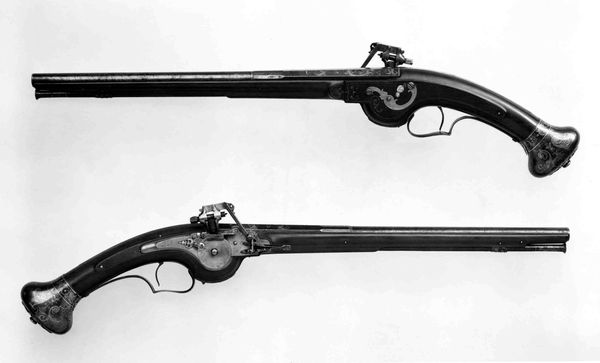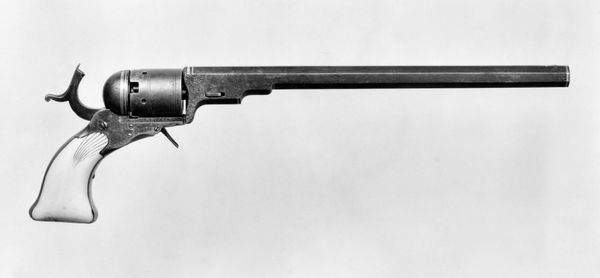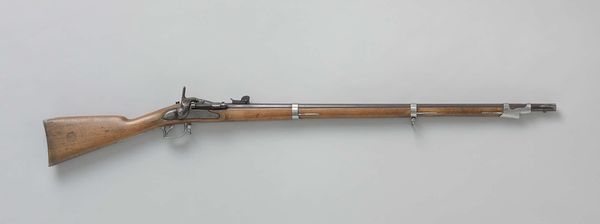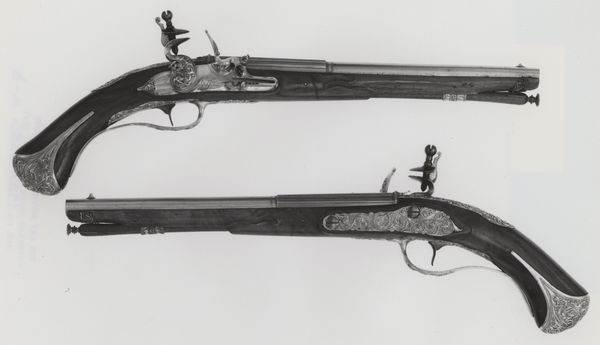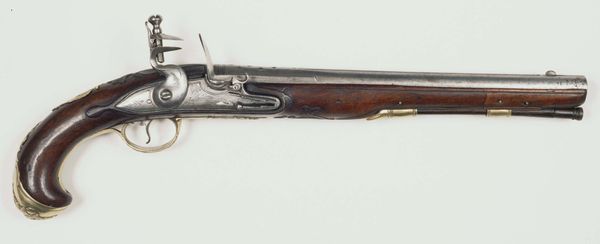
metal, sculpture
#
weapon
#
baroque
#
metal
#
sculpture
#
black and white theme
#
sculpture
#
black and white
#
armor
Dimensions: L. 45 1/2 in. (115.6 cm); L. of barrel 32 3/4 in. (83.2 cm); Cal. .58 in. (14.7 mm); Wt. 9 lb. 6 oz. (4250 g)
Copyright: Public Domain
Curator: This is a wheellock gun, likely created in the Cominazzo workshop between 1625 and 1675. The barrel and lock are made of metal, intricately sculpted. Editor: The first thing that strikes me is how delicate it seems for a weapon. It's almost like a piece of jewelry. Curator: It reflects Baroque aesthetics, where even instruments of power were adorned. What's fascinating is to think about how such an object functions within power structures and social hierarchies of its time. Ownership would signify immense privilege. Editor: Absolutely. The amount of skilled labor that went into its creation—the metalworking, the carving—speaks volumes. The materiality reveals the economic disparities of the era. Who mined the ore? Who smelted the metal? Whose hands actually shaped this? Curator: It definitely brings up the relationship between violence, craftsmanship, and societal norms. This weapon, a tool of potential harm, becomes elevated into art. What does it mean to beautify an object designed for aggression and domination? Editor: Right, we see both utility and luxury intertwined here. The mechanics are designed for a very specific purpose – warfare or hunting, likely. But the surface decoration is what elevates this from tool to treasure. One has to question the cultural values that encourage and commodify that transformation. Curator: Exactly, examining these elements side-by-side allows us to discuss identity and social standing, considering how gender also played a role. Who was permitted access to use this instrument, and in what social and political settings? How did possessing it bolster someone's status or agency? Editor: To consider the process – what technology made possible, but who benefitted is essential to me. This level of artistry would certainly require patronage and highly skilled artisans. The social framework for supporting that has to be a major factor. Curator: Looking at this weapon today allows us to ask vital questions about our present relationships to power, design, and violence. Editor: Agreed, and interrogating those historical manufacturing processes helps us to see the human cost inherent in even the most ‘beautiful’ objects.
Comments
No comments
Be the first to comment and join the conversation on the ultimate creative platform.

